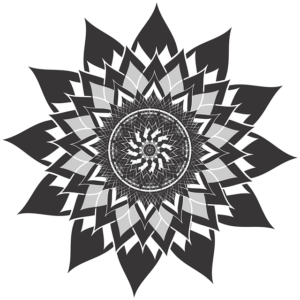In a world filled with uncertainty, challenges, and the unexpected twists and turns of life, symbols of hope serve as powerful reminders of our innate resilience and the potential for brighter days ahead.
These enduring symbols, drawn from various cultures, belief systems, and natural phenomena, ignite the spark of hope within us, guiding us through dark times and lifting our spirits when we need it most.
In this captivating journey, we will explore 10 extraordinary symbols of hope that have inspired and uplifted countless individuals, transcending borders and bridging the gaps between our shared human experiences.
Embrace the magic of these symbols as they offer solace, strength, and a renewed sense of hope for a better tomorrow.
Key Takeaways
- Symbols of hope have profound meaning across cultures, religions, and belief systems, providing comfort and inspiration amid challenges.
- Enduring symbols like the anchor, cross, dove, lotus, and olive branch remind us of inner strength, faith, peace, resilience, and the promise of renewal.
- Nature-based symbols like the rainbow and phoenix show the beauty and wonder that can emerge after difficult periods.
- The yin-yang represents the interplay and harmony between opposing forces, offering hope for equilibrium.
- The peace symbol embodies the universal longing for a conflict-free world built on diplomacy and unity.
- These powerful symbols ignite optimism and uplift the human spirit, helping us navigate uncertainty.
10 Symbols of Hope
1. Anchor
The anchor has long been associated with hope and stability, dating back to ancient times. Historically, sailors used anchors to secure their ships during storms, ensuring that they remained steady and safe amidst turbulent waters.
This association with safety and protection made the anchor a fitting symbol of hope for sailors, who relied on its unwavering strength to safeguard them in times of need.
Over time, the symbolism of the anchor has extended beyond its maritime roots, representing steadfastness and security in the face of uncertainty.
Just as an anchor keeps a ship from drifting away, the anchor symbol acts as a reminder that hope can ground us and provide stability during challenging periods in our lives.
The anchor encourages us to remain strong and resolute, no matter the obstacles we encounter, instilling a sense of hope that can help us navigate the storms of life with resilience and determination.
2. Hook
The hook, though not as commonly associated with hope as other symbols, has its own unique meaning and significance in certain cultures.
In Polynesian culture, particularly among the Maori people of New Zealand, the fishhook-shaped pendant called “hei matau” holds great symbolic value. Hei matau represents strength, prosperity, and safe passage over water, making it an important talisman for fishermen and travelers alike.
The symbolism of the hook in this context is derived from the Maori legend of Maui, a demigod who used a magical fishhook to pull the North Island of New Zealand from the ocean.
This tale of triumph over the sea underscores the hook’s association with overcoming adversity and navigating through challenges.
In a broader sense, hooks can also symbolize the idea of “hooking” onto hope and holding on tight, even in difficult situations.
The hook serves as a reminder that hope can anchor us, allowing us to find the strength and determination to persevere when faced with obstacles or hardships.
3. Cross
The cross is one of the most widely recognized symbols in the world, particularly in Christianity, where it holds profound spiritual significance. As the emblem of the crucifixion of Jesus Christ, the cross represents hope, salvation, and the ultimate sacrifice made for the redemption of humanity.
For Christians, the cross symbolizes the hope of eternal life, as Jesus’ death and resurrection on the cross opened the path to salvation for all believers.
In this context, the cross serves as a reminder of God’s love and the promise of eternal life for those who have faith in Jesus Christ.
The cross is not only a symbol of suffering and sacrifice but also a testament to the transformative power of hope and the victory of life over death.
In addition to its religious significance, the cross has also appeared as a symbol of hope and protection in various cultural and historical contexts. For example, Celtic crosses, which feature a circle around the intersection of the cross, represent the unity of spiritual and physical worlds, embodying the hope for harmony and balance.
Overall, the cross stands as a powerful symbol of hope, representing the belief in redemption, salvation, and the possibility of overcoming adversity through faith and divine intervention.
4. Dove
The dove has long been revered as a symbol of peace and hope across numerous cultures and religious traditions. Often associated with purity and innocence, the dove represents a harmonious and gentle force that transcends barriers and inspires hope in times of conflict or despair.
In Christianity, the dove is a symbol of the Holy Spirit, representing divine love and guidance. It is often depicted in religious artwork, illustrating scenes of baptism and other sacred moments.

The dove’s association with hope is also evident in the biblical story of Noah’s Ark. After the great flood, Noah released a dove from the ark to search for dry land.
The dove returned with an olive branch in its beak, signifying that the waters had receded and a new beginning was at hand. In this context, the dove served as a messenger of hope, symbolizing the end of a catastrophic event and the promise of a fresh start.
The dove’s representation of hope extends beyond Christianity, as it also holds significance in Judaism, Islam, and other spiritual traditions. In each of these contexts, the dove embodies the potential for healing, reconciliation, and the power of hope to overcome adversity.
5. Lotus flower
The lotus flower is a powerful symbol of hope, spiritual growth, and transformation in both Buddhism and Hinduism. Revered for its beauty and purity, the lotus represents the potential for enlightenment and the triumph of the human spirit over the challenges of life.
In Buddhism, the lotus flower symbolizes the journey to enlightenment, with each petal representing a step along the path.

The Buddha is often depicted sitting or standing on a lotus flower, signifying his transcendent nature and the attainment of spiritual wisdom. Similarly, in Hinduism, the lotus is associated with various deities, such as Vishnu and Lakshmi, and symbolizes purity, spiritual awakening, and the unfolding of the soul’s potential.
The growth of the lotus flower serves as a powerful analogy for overcoming adversity. Emerging from the muddy waters of ponds and lakes, the lotus rises above its murky surroundings to bloom, untainted and pristine.
This remarkable transformation symbolizes the human ability to rise above challenges, hardships, and the impurities of the material world, ultimately achieving spiritual growth and embracing hope.
The lotus flower reminds us that, despite the difficulties we may face, there is always the potential for growth, renewal, and the triumph of hope over adversity.
6. Phoenix
The phoenix is a mythical bird that has captivated the human imagination for centuries, symbolizing hope, rebirth, and the power of resilience. Found in the mythologies of various cultures, including Greek, Egyptian, and Chinese traditions, the story of the phoenix is one of triumph over adversity and the cyclical nature of life.
According to legend, the phoenix is a magnificent bird with brilliant plumage that lives for hundreds of years. When the phoenix reaches the end of its life cycle, it builds a nest of aromatic branches and spices, setting it alight to be consumed by the flames.
From the ashes of its predecessor, a new phoenix is born, rising from the smoldering remains with renewed vigor and beauty.
The phoenix’s ability to be reborn from its own destruction embodies the essence of hope. This powerful symbol represents the human capacity to overcome obstacles, endure hardships, and emerge stronger and more resilient than before.
The phoenix reminds us that even in the face of loss or devastation, there is always the possibility of renewal, regeneration, and a brighter future. As the phoenix rises from the ashes, so too can we rise above our challenges and embrace the hope that guides us towards new beginnings.
7. Yin and Yang
The Yin and Yang symbol, also known as the Taijitu, is a fundamental concept in Chinese philosophy and culture, representing the balance and interconnectedness of seemingly opposing forces in the natural world.
The symbol consists of a circle divided into two swirling sections, one black (Yin) and one white (Yang), with a smaller circle of the opposite color within each section. The Yin and Yang embody the dualities and complementary forces that exist in the universe, such as darkness and light, cold and heat, or passivity and activity.
The interplay of opposing forces within the Yin and Yang symbol represents the hope for harmony and equilibrium in life. This concept teaches us that seemingly contradictory elements can coexist and even depend on one another for balance.
The presence of a small circle of the opposite color within each section serves as a reminder that, even in the midst of adversity or challenge, there is always a glimmer of hope, and vice versa.
The Yin and Yang symbol encourages us to embrace the natural ebb and flow of life, seeking balance and harmony amidst the ever-changing circumstances we encounter.
By recognizing the inherent interconnectedness of all things, the Yin and Yang offer hope for a more harmonious existence and the potential for personal growth and self-understanding.
8. Peace symbol
The peace symbol, also known as the peace sign, is an iconic emblem of hope, unity, and the desire for a world free from conflict and violence. Designed in 1958 by British artist Gerald Holtom, the peace symbol was initially created as the logo for the Campaign for Nuclear Disarmament (CND) in the UK.
The design combines the semaphore signals for the letters “N” and “D,” standing for “Nuclear Disarmament.” The symbol quickly gained popularity beyond its original intent and became an emblem of peace and anti-war movements worldwide.
The peace symbol embodies the hope for a world in which conflicts are resolved through diplomacy and understanding, rather than violence and destruction. It has become a universal sign of solidarity, often seen at protests, demonstrations, and in various forms of art and popular culture.
The peace sign represents the aspirations of people from diverse backgrounds who share a common vision of a more peaceful, just, and harmonious world.
The enduring popularity of the peace symbol highlights the human desire for hope and unity, even in the face of adversity and division. As a representation of the collective longing for a better future, the peace symbol continues to inspire hope and the pursuit of peaceful solutions to the challenges that confront us.
9. Rainbow
The rainbow, a beautiful and awe-inspiring natural phenomenon, occurs when sunlight passes through water droplets in the atmosphere, creating a spectrum of colors that arches across the sky.
Rainbows have long been associated with hope and promise, serving as a reminder of the beauty and wonder that can emerge after a storm.
In various cultural myths and religious texts, the rainbow plays a significant role as a symbol of hope and divine promise.
In the biblical story of Noah’s Ark, the rainbow appears after the great flood as a sign of God’s covenant with humanity, promising never to send another flood to destroy the Earth.
This powerful image of the rainbow as a symbol of hope and divine protection has resonated throughout history, inspiring countless interpretations and artistic expressions.
In other cultural traditions, rainbows have been associated with the connection between the earthly and divine realms, representing hope for guidance, blessings, and the potential for spiritual growth.
From Native American legends to Irish folklore, the rainbow serves as a symbol of hope, reminding us that even in the darkest times, there is always the potential for light, beauty, and the promise of a brighter future.
10. Olive Branch
The olive branch has been a widely recognized symbol of peace and hope throughout history, with its roots in ancient Greek mythology and biblical stories.
The olive tree itself has long been revered for its life-sustaining properties, as it provides nourishment, oil for lighting lamps, and wood for various purposes.
In ancient Greek mythology, the olive branch was associated with the goddess Athena, who was the deity of wisdom, war, and peace. According to legend, Athena and Poseidon, the god of the sea, competed for the patronage of the city of Athens.
Each god presented a gift to the city, with Poseidon creating a saltwater spring and Athena offering an olive tree.
The citizens of Athens chose the olive tree as the more valuable gift, as it provided sustenance, shade, and a symbol of peace. From that moment on, the olive branch became a representation of hope and reconciliation, as well as an emblem of Athena’s wisdom and protection.
In biblical stories, the olive branch holds similar significance as a symbol of hope, peace, and divine promise.
Most notably, in the story of Noah’s Ark, a dove returns to Noah with an olive branch in its beak, signaling the end of the great flood and the beginning of a new chapter for humanity.
This image of the olive branch as a harbinger of hope and a promise of renewed life has endured through the centuries, making it a universally recognized symbol of peace and the triumph of hope over adversity.
The Guiding Light of Symbols of Hope
Beyond their emotional impact, symbols of hope can serve as guiding lights during difficult stages of life’s journey.
A sailor fixated on an anchor tattoo during a stormy voyage or a grieving friend comforted by a cross necklace exemplify the power of symbols to center us and provide direction.
More than just inspiring optimism, these symbols give us the courage and resolve to actively overcome adversity. Just as a lighthouse steadies ships navigating in the dark, guiding symbols of hope empower us to chart our course through stormy seas and emerge stronger than before.
Their presence is a reminder that we have the inner strength to persist through challenges and fulfill the promise of better days ahead.
Symbols of Hope – FAQs
Why do symbols of hope resonate with people across cultures?
Symbols of hope tap into universal human experiences and emotions. They provide comfort through recognizable imagery that conveys uplifting concepts like faith, peace, and resilience. These symbols transcend cultural barriers.
How can a simple symbol spark optimism and strength?
Though simple in form, symbols of hope are imbued with deeper meaning and rich history. Familiar symbols can activate parts of our mind tied to faith, overcoming challenges, and our interconnection. This ignites our inherent hope and strength.
Do natural symbols like the rainbow have religious ties?
While found in religious texts, rainbows and other natural symbols carry inclusive meaning as well. Rainbows inspire awe and remind us of beauty emerging after difficult times. Natural symbols resonate regardless of one’s faith.
Can new symbols effectively represent hope?
Yes, new symbols can come to embody hope, though it helps for them to build on familiar meanings. For example, the peace sign creatively drew from letter shapes but tapped into the universal desire for a conflict-free world. Impactful new symbols spark recognition and convey uplifting ideals.
Is hope always represented by positive symbols?
Not necessarily. In some cultures, hope-related symbols like the yin-yang integrate both positive and seemingly negative forces to represent harmony and equilibrium. Challenging times are recognized as part of the human experience, but there is still hope for overall balance.
Do symbols promising renewal help people overcome loss?
Yes, the phoenix and lotus representing rebirth and growth give hope after loss. They symbolize emerging renewed from life’s challenges.
Why are nature symbols so tied to hope?
Nature endures cycles of hardship and rejuvenation, like storms giving way to rainbows. Natural symbols mirror this resilience and remind us of beauty.
Can everyday items take on hopeful symbolism?
Yes, anchors show that ordinary tools meant for stability can represent grounding hope. Even keys suggest unlocking potential.
Do hopeful symbols help guide people morally?
Symbols like the yin-yang promote harmony and balance. Moral aspirations like peace and unity are embedded in many symbols of hope.
How did early spiritual symbols influence modern meanings?
Current meanings of the cross and lotus, for example, grew from early spiritual roots. They retain those ties while resonating more universally now.
Can personal keepsakes serve as meaningful symbols?
Yes, inherited or gifted items like jewelry engraved with hopeful symbols can take on sentimental meaning and inspire the wearer.
Why have some hopeful symbols persisted for centuries?
Enduring symbols effectively tap into timeless human needs like faith, peace, resilience, and rebirth that still provide comfort.
Do hopeful symbols help people find meaning in suffering?
Symbols like the cross and phoenix redeem suffering, representing the hope that growth and renewal can emerge from adversity.
See also:
Strength Runes: An In-depth Exploration
35 Inspiring Symbols of Growth: Unleash Your Inner Potential
Ancient Protection Symbols from Around the World
32 Symbols of Rebirth: Inspiring Signs of Change and Growth
30 Powerful Symbols of Resilience from Across the Globe: Norse, Celtic, and Beyond








